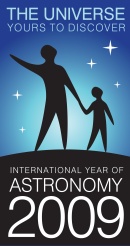Chesapeake Bay's Independent Newspaper ~ Since 1993
1629 Forest Drive, Annapolis, MD 21403 ~ 410-626-9888
Volume XVII, Issue 52 ~ December 24 - December 30, 2009
Home \\ Correspondence \\ from the Editor \\ Submit a Letter \\ Classifieds \\ Contact Us
Dining Guide \\ Home & Garden Guide \\ Archives \\ Distribution Locations \\ Advertising
![]()



Sky Watch

by J. Alex Knoll
Have a Merry Saturnalia
Like ancient cities, one celebration is often built atop another
A couple thousand years ago, Romans gathered around December 25 to wish one another a Merry Saturnalia, the most popular holiday of the Roman year. Saturnalia was both a time to honor the god of agriculture, Saturn, and also a grand festival lasting up to seven days. There were feasts and celebrations, visits to friends and gifts to exchange. Religious historians believe that early Christians chose this day to mark the birth of Jesus so as to blend in with the Roman celebrations and escape detection and persecution.
The first-quarter moon appears high in the south at sunset Christmas Eve, around 4:50, and sets in the west a little after midnight. As the gibbous moon waxes through the week, it sets more than an hour later each night, until at full moon on the 31st it rises as the sun sets and sets with sunrise. The second full moon of December, this is commonly called a Blue Moon, although the term technically applies not to the second full moon in any given month but to the fourth full moon in a three-month season.
Mercury appears low in the southwest in the wake of the setting sun at 4:50. This fleet planet never strays far from the sun’s blinding light, climbing at best 15 degrees above the horizon. You may want binoculars to help locate this surprisingly bright light.
Sunset reveals brilliant Jupiter high in the southwest. Aside from the moon, there is no brighter light in the sky until the gaseous giant sets a little before 9pm. As Jupiter sinks beneath the southwest horizon, ruddy Mars rises above the northeast horizon. While not the brightest light in the heavens, Mars outshines all his neighbors, including first-magnitude Regulus, which follows on his heels by about 10 degrees. Saturn rises due east around midnight, trailing far behind brighter Mars, and remaining visible until sunrise around 7:20.
Illustration: © Copyright 1925 M.C. Escher/Cordon Art-Baarn-Holland; Graphics: © Copyright 2009 Pacific Publishers. Reprinted by permission from the Tidelog graphic almanac. Bound copies of the annual Tidelog for Chesapeake Bay are $14.95 ppd. from Pacific Publishers, Box 480, Bolinas, CA 94924. Phone 415-868-2909. Weather affects tides. This information is believed to be reliable but no guarantee of accuracy is made by Bay Weekly or Pacific Publishers. The actual layout of Tidelog differs from that used in Bay Weekly. Tidelog graphics are repositioned to reflect Bay Weekly’s distribution cycle.Tides are based on National Oceanic and Atmospheric Administration and are positioned to coincide with high and low tides of Tidelog.
© COPYRIGHT 2009 by New Bay Enterprises, Inc. All rights reserved.
